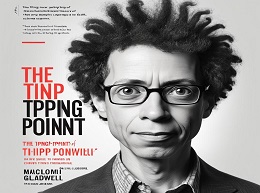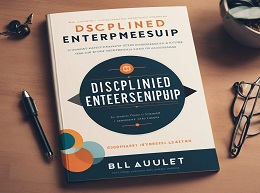The Tipping Point

"The Tipping Point" by Malcolm Gladwell is a groundbreaking exploration of how small actions and changes can lead to significant shifts in society, business, and culture. Through captivating anecdotes, compelling research, and insightful analysis, Gladwell uncovers the underlying mechanisms behind epidemics, trends, and viral phenomena. In this comprehensive review, we'll delve into the key concepts of "The Tipping Point," share intriguing examples, and offer insights into how understanding the tipping point can empower individuals and organizations to effect transformative change.
Understanding the Tipping Point:
Gladwell introduces the concept of the tipping point as the moment when a small change or action leads to a dramatic and irreversible transformation.
Example:
The sudden popularity of Hush Puppies shoes in the 1990s, sparked by a few influential individuals in New York City, illustrates how trends can reach a tipping point and become widespread phenomena.
The Law of the Few:
Gladwell discusses the role of "connectors," "mavens," and "salesmen" in driving social epidemics and spreading ideas.
Example:
Paul Revere's midnight ride to warn of the British invasion during the American Revolution exemplifies the power of a connector who catalyzed a movement through his extensive social network.
The Stickiness Factor:
The book explores the concept of the stickiness factor, or the ability of an idea or message to capture and hold the attention of its audience.
Example:
Sesame Street's use of catchy songs and engaging characters to teach children educational concepts demonstrates the stickiness factor in action, making learning fun and memorable.
The Power of Context:
Gladwell delves into the significance of context and environment in shaping behavior and influencing outcomes.
Example:
The sharp decline in crime rates in New York City during the 1990s, attributed to changes in policing strategies and environmental improvements, showcases the power of context to effect positive change.
Applying Tipping Point Principles:
The book offers practical insights for marketers, entrepreneurs, and policymakers on leveraging the tipping point to drive social change and achieve organizational goals.
Example:
Airbnb's growth from a small startup to a global hospitality giant can be attributed in part to its strategic use of connectors and influencers to reach a tipping point and gain widespread adoption.
In conclusion, "The Tipping Point" offers a fascinating exploration of how ideas, behaviors, and trends spread and reach critical mass. By understanding the principles outlined in the book and learning from real-world examples, individuals and organizations can harness the power of the tipping point to catalyze change, ignite movements, and shape the world around them.













